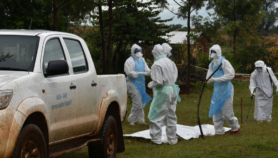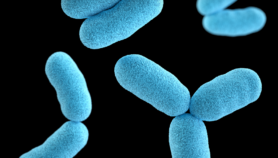Send to a friend
The details you provide on this page will not be used to send unsolicited email, and will not be sold to a 3rd party. See privacy policy.
Researchers are trying to identify precursors to the 1918 ‘Spanish flu’ virus that is thought to have killed some 40 million people.
The research could help explain how different types of flu virus succeed each other.
Led by Jeffery Taubenberger of the US Armed Forces Institute of Pathology in Washington DC and John Oxford of the UK-based University of London, the team is using a number of tissue samples collected as early as 1905 and stored in the cellars of the Royal London Hospital.
So far, the team has found 200 samples from people who may have died from flu, and confirmed five. Taubenberger says that all the confirmed cases were infected with an H3 strain of flu virus.
This describes the haemagglutinin protein on the surface of the virus’s shell — a key protein and important tool in identifying flu viruses. The team plans to sequence the entire viral genome and compare it to the H1N1 virus strain that caused the 1918 pandemic.
This could help them to understand the origins of the deadly 1918 virus.
Oxford says it could confirm or deny Taubenberger’s contested theory that the virus jumped directly from birds to humans without combining its genes with those of a human virus.
Taubenberger made international headlines last year by resurrecting the 1918 flu virus.













